Looking toward the future, by the end of the 21st century, it could be that animals of the genus homo sapiens will be the most significant influence to have threatened the earth’s biodiversity. Some might not take kindly to the human race being referred to as animals. Hence we have put together a list of the top 10 most endangered animals in the United States.
Still, the fact is that we are. And the sooner we acclimate ourselves to this definition, the sooner we’ll realize that all life is related to us. And we will treat them more kindly. This is important because human activities and their associated hazards are the leading cause of 99% of threatened and endangered animals.
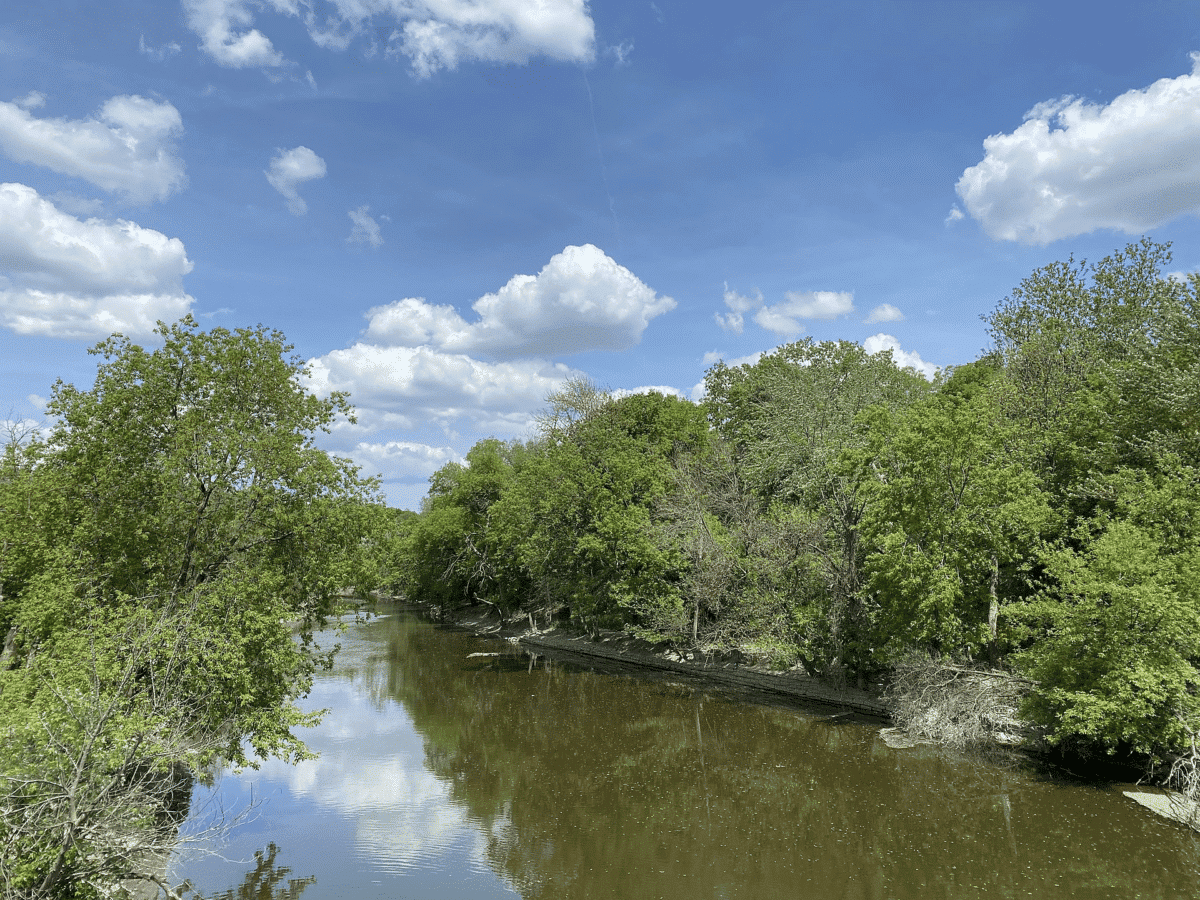
Des Plaines, Illinois By Guerillaart
Although a fair few of these hazards are naturally occurring, most are initiated by humans in pursuit of economic and cultural enterprise. The most prevalent of these menaces is improbably the threat of degradation and erosion they pose to animal habitats. That’s through the large-scale conversion of land in previously undisturbed areas for purposes like logging, commercial agriculture, etc.
The relative effects of each activity differ among ecosystems and across genera. As yet, wildlife mortality from ecological disturbances has lessened due to limiting human disturbance and prosecution of flagrant offenders. But these occurrences, even when few and far between, still hold grave ramifications for some susceptible animal groups. Keep reading to learn more about the top 10 most endangered animals in the United States.
Global Warming is a Big Threat Too
In addition, global warming has emerged as a universal threat. And much research is still being conducted to identify its latent effects on specific species, populations, and ecosystems.
Many conflicts and controversies between conservation efforts and human activities are often widely publicized and politicized in the global media. This is perhaps why there’s still much debate regarding the effectiveness of shoring up expanses of territory for threatened animals. If the public is made well aware, certainly it’ll be clear these issues shouldn’t be one of protracted discourse.
Take, for example, the recent decline in the amphibian population worldwide. This class of animals being susceptible to environmental changes is known to be an indicator of global environmental health. Their declining population due to habitat destruction, pollution, diseases, and climate change is a strong indicator of where our atmosphere is headed.
Beyond this example, many of the world’s birds are also at risk. Migratory bird species such as penguins, albatrosses, and petrels known for their sensing of the seasons and earth’s magnetic fields are dwindling due to climate change and human activities such as longline fishing.
Also, marine life is not exempted. Long-living species of fish that require many years to develop and reach sexual maturity are particularly susceptible to exploitation. The meat and fins on species of sharks, rays, and whales command hefty prices in many markets around the world. This results in the indiscriminate harvest of some of these aquatic creatures.
Furthermore, it is essential to note that humans are also severely affected by the degradation of these ecosystems. Unsustainable hunting and harvesting of the resources of these endangered animals for purposes such as industry, food production, medicine, and urbanization is a growing concern in many parts of the world. Not excluding the United States.
What are Endangered Animals?
An endangered animal is a specie of organism threatened by the devastating phenomenon of extinction.
The multi-governmental International Union for Conservation of Nature [IUCN], founded in 1948, developed the most popular objective system for assessing the situation of declining species in 1994.
This classification system measures specific criteria and categories to determine the conservation status of individual animal species. Every year, their assessments are published in the widely popular IUCN Red list. The list recognizes several categories of specie status, from the ones lacking calculable data [Data Deficient] to species considered already extinct [EX].
Here in the United States, the United States Fish and Wildlife Service [USFWS] under the Department of Interior is responsible for conserving and managing wildlife and fish. The Endangered Species Act [ESA], signed into law by President Nixon in 1973, governs and protects the activities of the USFWS.
Consequently, as of 2022, in the USFWS database, 1,092 species of animals are listed as endangered. The USFWS, with the help of the ESA Act, has brought back many species once considered endangered from the brink of extinction.
Factors Endangering Animals in the Wild
Many experts estimate that the current animal extinction rate is between 1000x to 10,000x higher than the natural rate. This meteoric rise is a result of human activities and perpetual encroachment. Although a combination of factors can lead to an animal species dwindling to the point of extinction, most of them are consequential. Not being exhaustive, a couple of them are:
- Habitat loss
- Pollution
- Overhunting and overharvesting
- Human-wildlife clashes
- Diseases
- Genetic vulnerability
- Invasive species
- Low birth rate
- High specialization
- Small population
From this, we can draw a consensus that we are the number one reason endangered animal populations continue to increase.
To sum up, if we want to curb this hazard, we should get informed about the type of animals that are most endangered. At the very least, in our corner of the planet. So when next and if ever we encounter them, we can appreciate their beauty. And the conservation efforts that went into keeping them alive.
Keep reading to learn about the top 10 most endangered animal species in the United States.
Click below to jump to any section on the top 10 most endangered animals in the United States:
1. Californian Condor (Gymnogyps californianus)
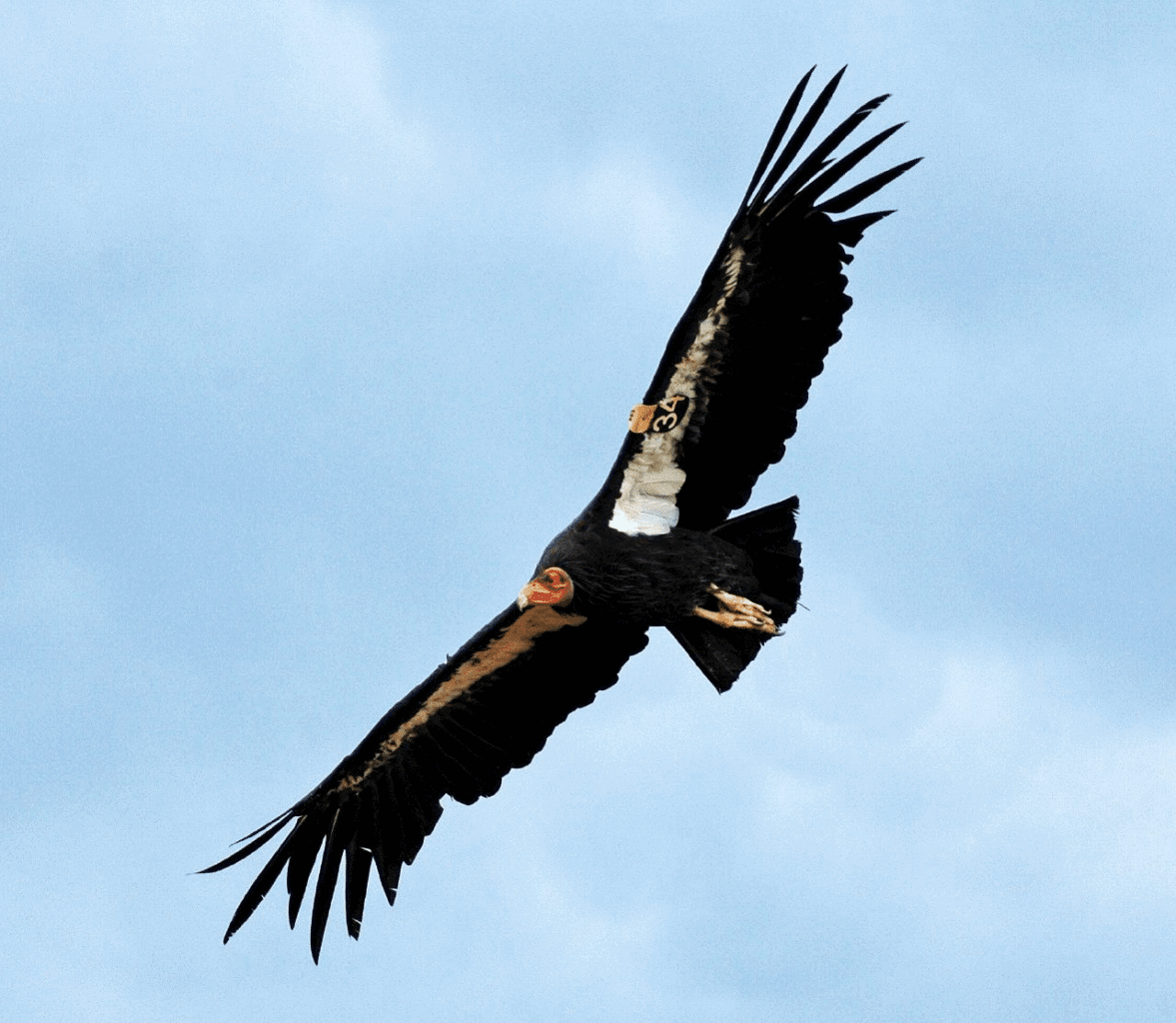
The Californian Condor holds the title of the largest flying bird in America. It weighs over 20 pounds when fully grown. And its wingspan can measure up to 9 feet from tip to tip. Also, this member of the New World Vulture family can glide for hours without flapping its wings. From this vantage point, it searches for food, mainly carrion and carcasses.
Thousands of years ago, The Californian Condor is believed to have roamed many parts of North America, from California. And all of the West Coast to Texas, Florida, and New York. Human activities have recently led to this species’ capturing, poisoning, and killing. As a result, they have been found as far north as British Columbia in Canada. And as far south as Baja California in Mexico.
Californian Condors have been on the endangered animal specie list. And they’re protected by federal law since 1967 and the state of California since 1971. Consequently, conservation efforts have helped bring back up the number of their population. From a few dozen in the 1960s and 70s to a less extreme but still vulnerable amount of over 400 putting them on the list of the top 10 most endangered animals in the United States
Most causes of their dwindling population in the past 200 years have been human activities. A major one of which is poisoning, from the use of environmental pollutants such as DDT in agriculture. And lead inadvertently ingested from shot down carcasses.
The United States Fish and Wildlife Service and the National Park Service have partnered with multiple state and foreign wildlife departments to sustain the Californian Condor recovery program. This program aims to establish a self-sustaining population of condors in the wild.
2. Florida Panther (Puma concolor coryi)
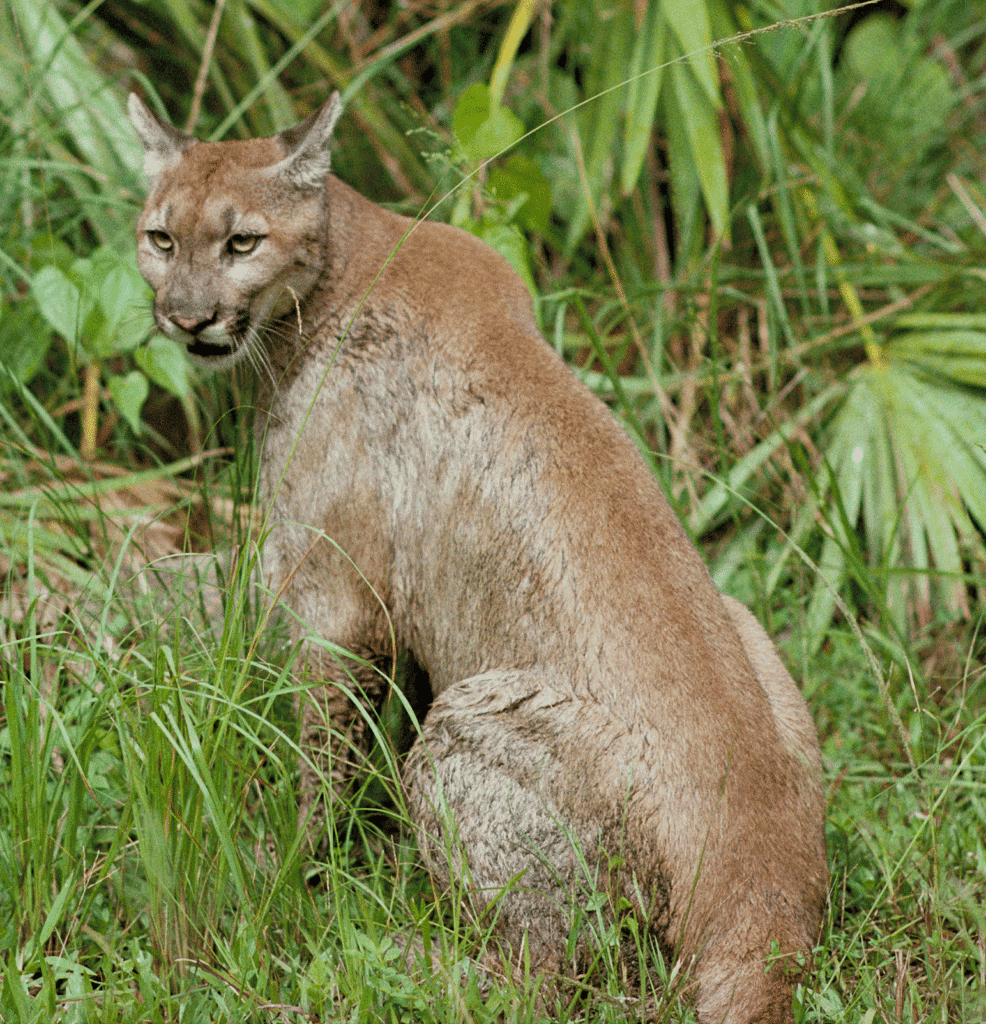
Once found roaming the Southeastern U.S.A. from most of the Gulf Coast of Florida and Louisiana to Arkansas. Today the population of Florida Panthers in the wild is less than 100.
These endangered animals utilize a diversity of warm climate habitats, primarily found in wetlands, swamps, and upland forests. Where they hunt for natural prey, including white-tailed deer and feral hogs. Without these, they hunt smaller prey such as raccoons, gators, and birds.
Today, much of the threat that faces the remaining Panther population is habitat loss. From elements like forest degradation, fragmentation, agriculture, and urban sprawling. As a result, this reduced range has increased the mortality of the species from other factors like inbreeding (which reduces their genetic diversity), diseases, environmental toxins, and frequent collisions with automobiles on the roads that cut through their habitats.
Recent attempts to restore and conserve these species have seen positive results in genetic restoration programs targeting natural gene exchange by introducing other contiguous species of Puma concolor. Such as the Texas Panther, to reduce inbreeding and build up their genetic diversity.
Equally, there have been conservation efforts ongoing by government and independent organizations to preserve their existing habitats. That’s mostly by extending public outreach and educating people on peaceful coexistence with Panthers.
3. Vaquita (Phocoena Sinus)
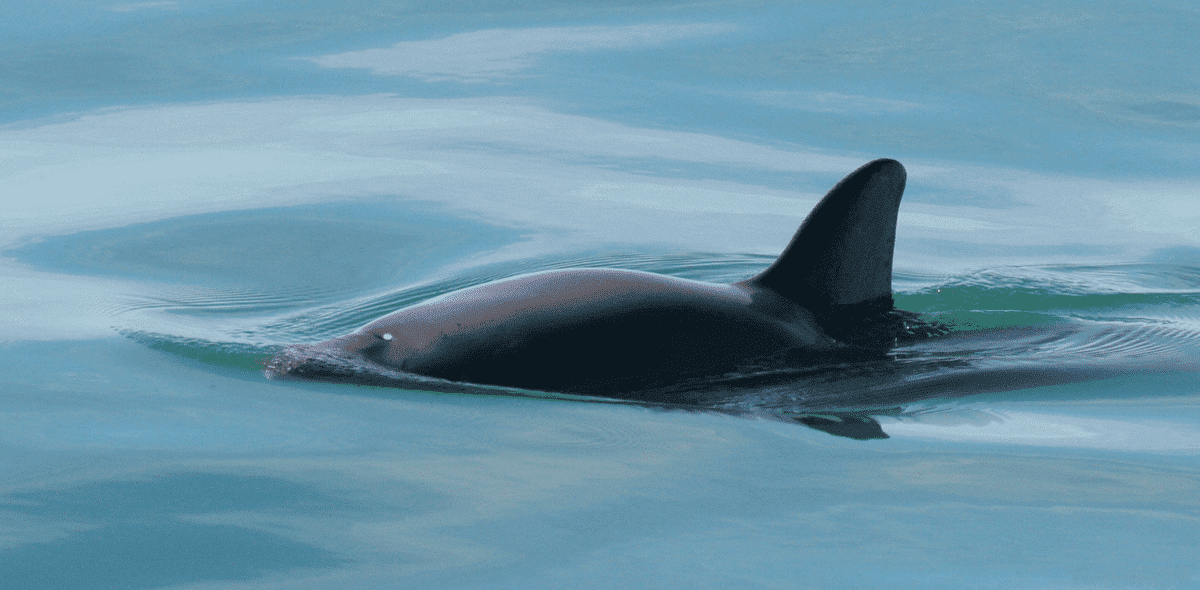
The vaquita is a small aquatic mammal of the infraorder cetacea which also includes whales and dolphins. It is the smallest member of the porpoise family. They are found wallowing in the northern part of the Vermilion Sea in Baja California, Mexico. They weigh just above 45kg and average 1.5m in length at full growth.
The species is threatened by extinction. And with barely over a dozen left, they are currently red-listed as a critically endangered animal species by the IUCN. The steep decline in their population is mainly caused by a bycatch in gillnets by fishermen illegally fishing for Totoaba [also a vulnerable fish species] off the coast of Mexico.
Again, without the enforcement of a complete gillnet ban throughout their entire habitat, we stand a chance of losing this species forever, adding them to the top 10 most endangered animals in the United States.
4. Red Wolf (Canis rufus)
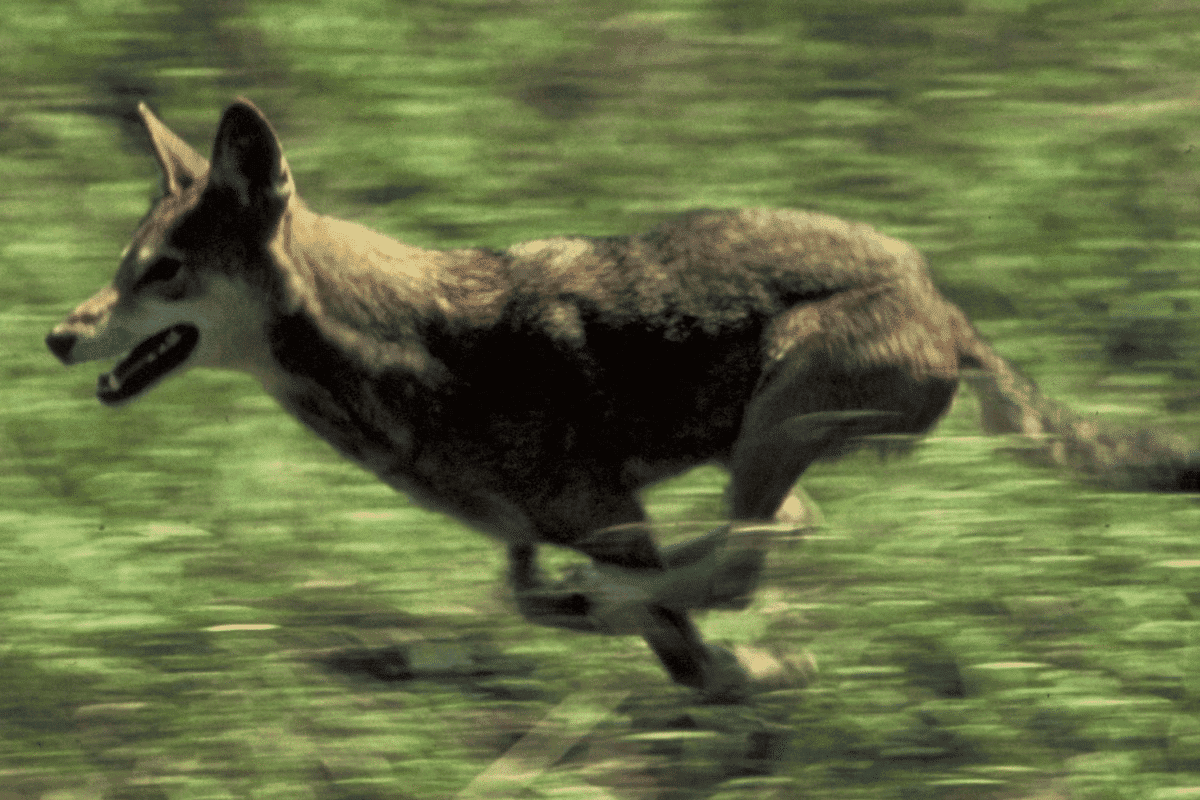
Weighing an average of 45-80 pounds and standing at 26 inches at the shoulder, the Red Wolf is a critically endangered animal native to the eastern United States. It used to range throughout the southeastern US, but its range is highly diminished these days. Currently, the number of red wolves in the wild sits at barely two dozen. Despite the conservation efforts to bring the number of this species back up to 100 between 1987 and 2012.
Several factors have been responsible for the decimation of the red wolf population. Chief among them being; persecution by ranchers, parasite infestations, environmental diseases, and food competition. Also, climate change and rising sea levels threaten to drown their low-lying coastal habitats, adding them to the top 10 most endangered animals in the United States.
Through its Special Survival Plan [SSP], the US Fish and Wildlife Service has been steadily increasing the number of these species, and the recovery plan is expected to be finalized by 2023. Similarly, scientists are perfecting techniques to restore their wetland homes. Like planting soil-stabilizing trees to protect the refuge from high tides and strong storms.
5. Giant Sea Bass (Stereolepis gigas)
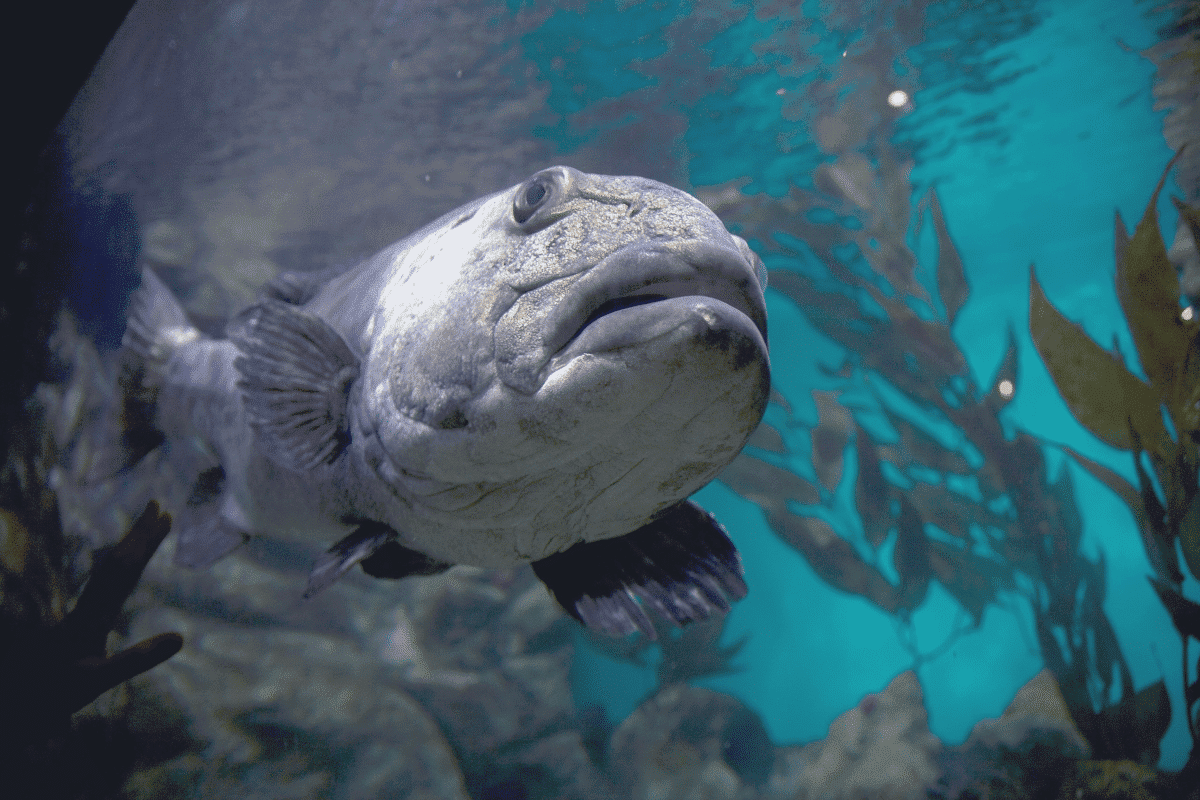
The Giant Sea Bass is found in the pacific waters of the West Coast. From Northern California all the way to Baja California in Northern Mexico. These predators can reach up to 7 feet in length and weigh up to 500 pounds.
Giant Sea Bass is a critically endangered species and has been listed by the IUCN as such since 1996. Recreational and commercial fishing, especially the use of gillnets, is mainly culpable for the depleting number of these species over the past decades.
To stifle this sharp decline, the California Department of Fish and Game has banned all forms of harvesting of the giant sea bass. However, off the coast of Mexico, where they can also be found wallowing, fishing for this endangered animal still goes on unfettered.
6. Black-Footed Ferret (Mustela nigripes)
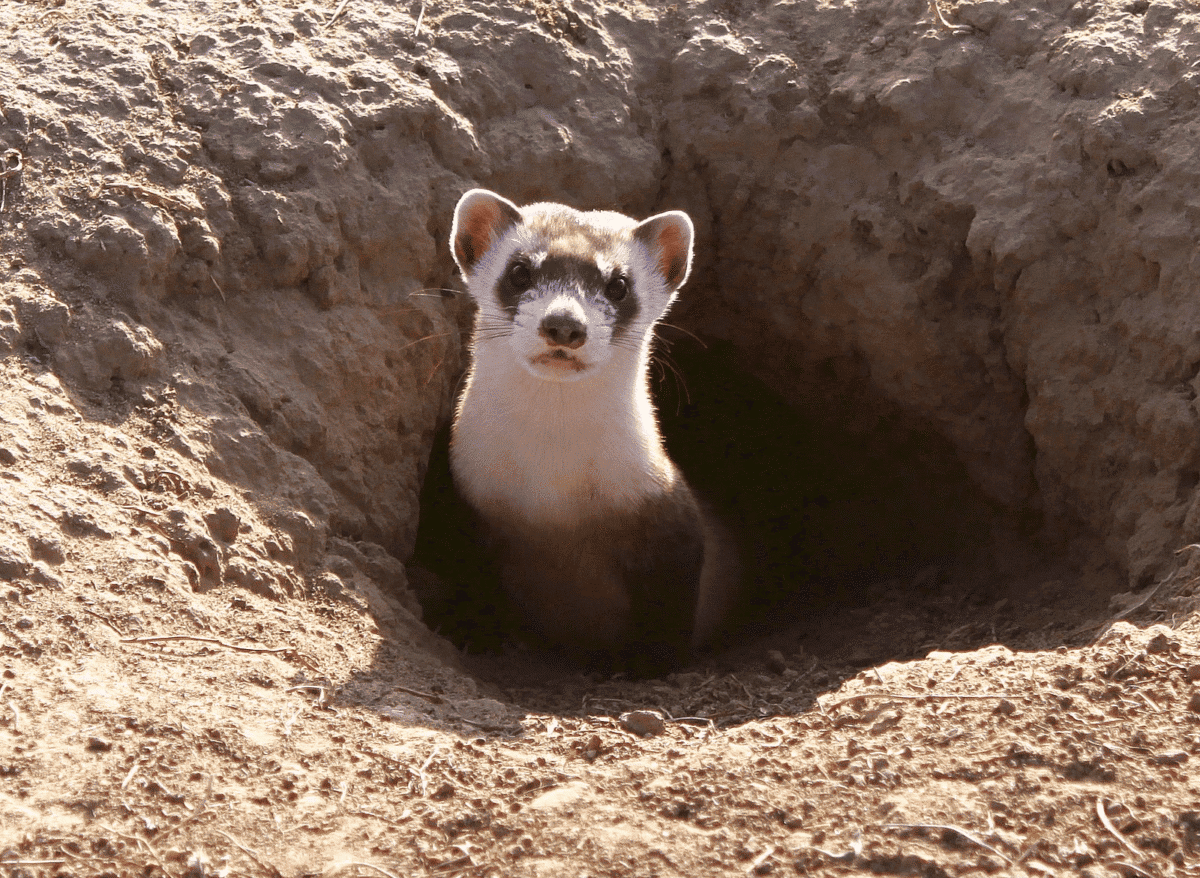
The black-footed ferret, the only ferret species native to the North American continent, is one of America’s most endangered mammalian species. They are members of the weasel family. And are known for their distinctive yellow-beige coats and black markings on their faces, feet, and tail. Also, their adults weigh less than three pounds and can grow up to 24m long.
Today, there are only about 370 black-footed ferrets left in the wild. Attempts to reduce the drastic rate of their eradication have faced stumbling blocks. Mainly because habitat loss due to agriculture, which is the number one issue hurting the species population, is not as easy to curb.
Likewise, these weasels primarily live in burrows created by prairie dogs and hunt them as prey. The eradication of prairie dogs also means depletion of their natural food source, that’s why they are on the list of the top 10 most endangered animals in the United States.
Federal and state agencies, zoos, and other conservation organizations are working with landowners to protect prairie dogs and their habitats. It is thought that this will eventually bring back up the population of black-footed ferrets.
7. Staghorn Coral (Acropora cervicornis)
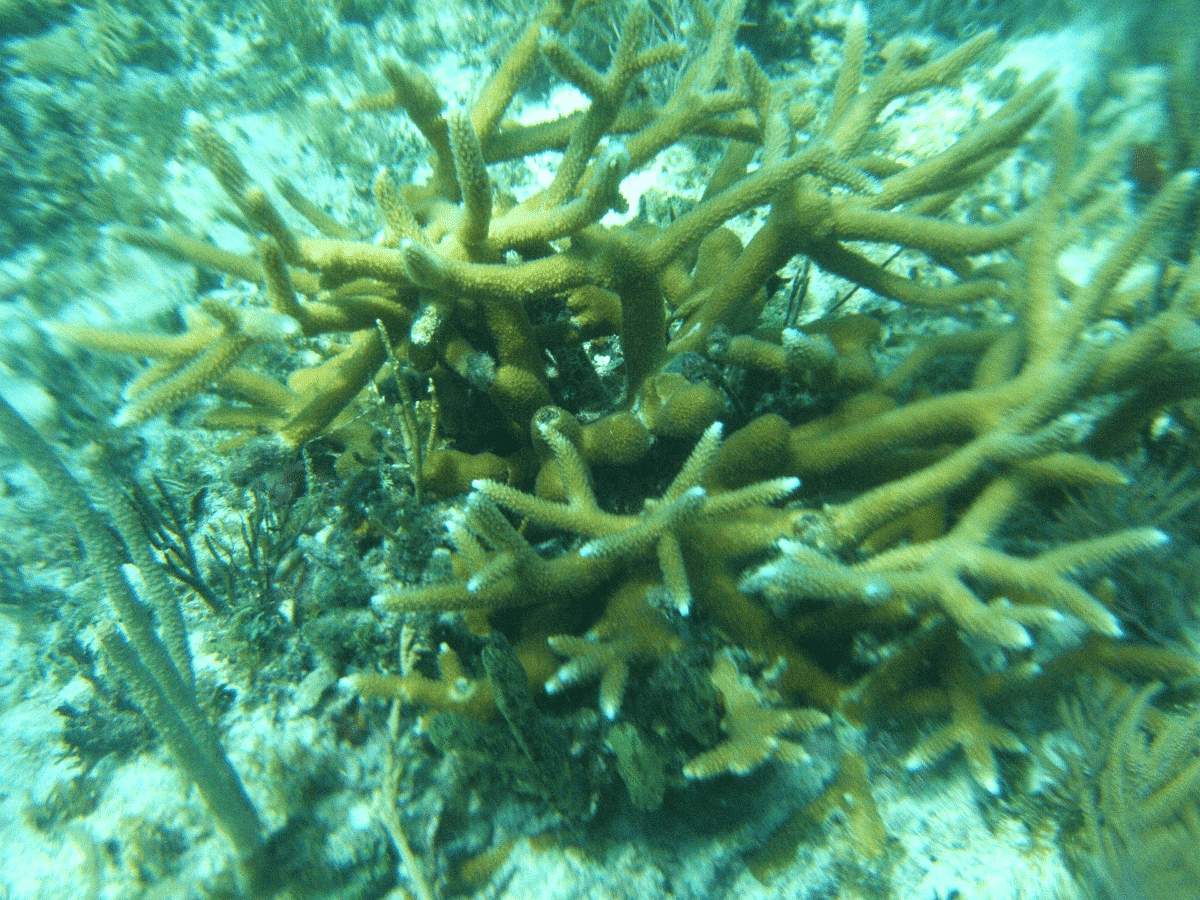
The staghorn coral is found in the fore reef and back reef habitats off the coast of the United States down to Central America and the northernmost parts of South America. This branchy, stony coral is responsible for much of the reefs in the shallow waters along the Bahamas, the Florida Keys, and the Caribbean Islands.
Staghorn corals face the same threats synonymous with many of the world’s corals. Bad water quality, diseases resulting from pollutants and land runoff, and overfishing which has unbalanced their ecosystem by reducing natural predators and prey, and allowing more seaweed and algae to overwhelm them.
In addition, the casual burning of fossil fuels has resulted in the ocean absorbing more CO2 from the atmosphere, which has led to increased water temperature and acidity. Increased temperature and water acidity bleach corals and inhibit them from depositing calcium carbonate that forms their exoskeletons which we know as reefs.
Today, there has been a 98% decline in the population of staghorn corals throughout the range that usually used to be populated by them.
8. Franklin’s Bumblebee (Bombus franklini)
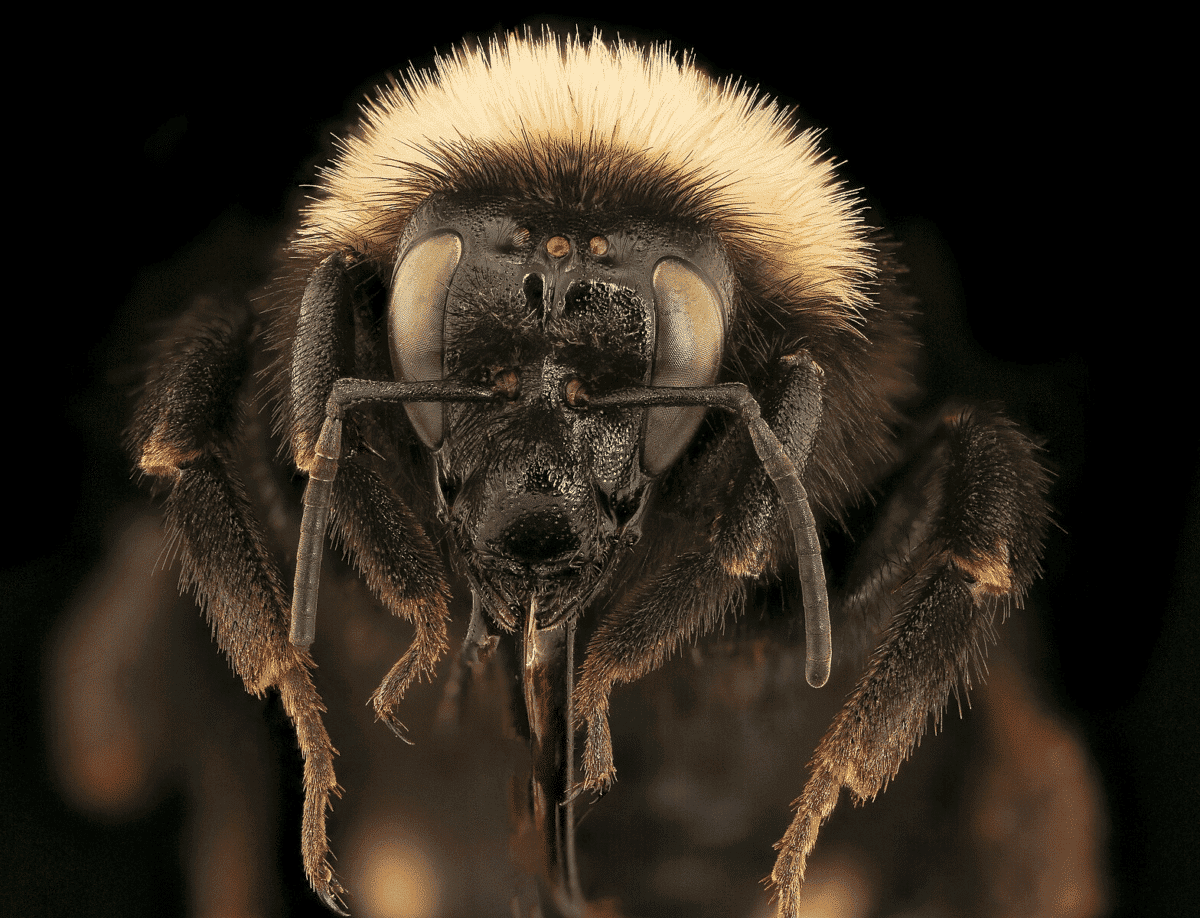
Named after the early 20th-century entomologist Henry J. Franklin, Franklin’s bumblebee is one of the most narrowly distributed species of bumblebee. This critically endangered animal is found only between Southern Oregon and California, sadly earning them a spot on the the top 10 most endangered animals in the United States list.
Since 2006, there has been no reported sighting of any Franklin’s bumble bee. And some fear it might already even be extinct. The sharp decline in their population is believed to be as a result of the spread of foreign diseases introduced by imported bumblebees from Europe used to pollinate highly in-demand crops such as tomatoes and peppers.
9. Mississippi Gopher Frog (Lithobates sevosus)
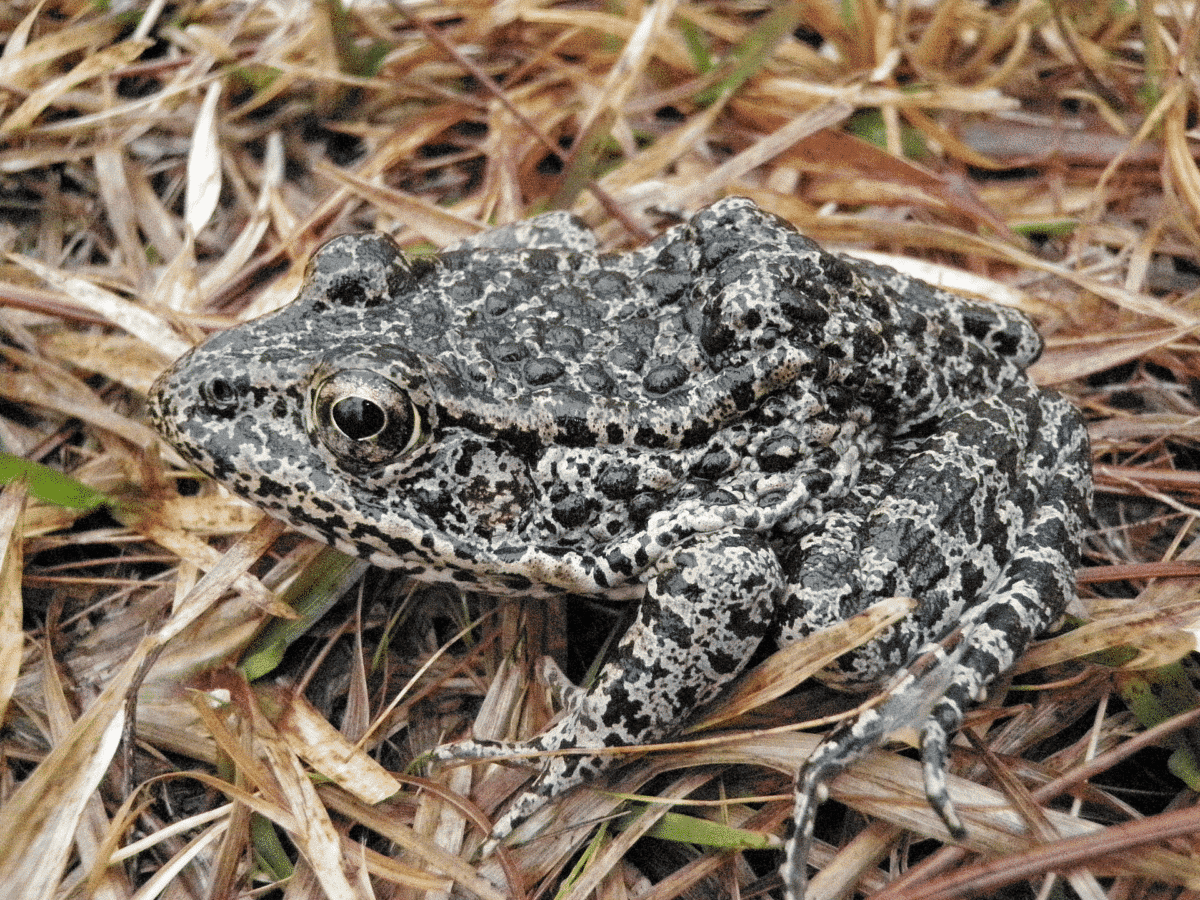
Sometimes called the “dark gopher frog” or “dusky gopher frog,” this secretive frog prefers temperate coastal forests and intermittent freshwater marshes as habitats and is found in the southern United States.
These solitary amphibians have been listed as an endangered animal species since 2001, and there are fewer than 250 mature dusky Gopher frogs in the wild. Hence they are on the the top 10 most endangered animals in the United States list.
Habitat loss, diseases, and invasive species have been culpable for the frog’s population decline. Recently, the US Fish and Wildlife Service designated 7000 acres of land in Mississippi and Louisiana in an attempt to boost their population.
10. Leatherback Turtle (Dermochelys coriacea)
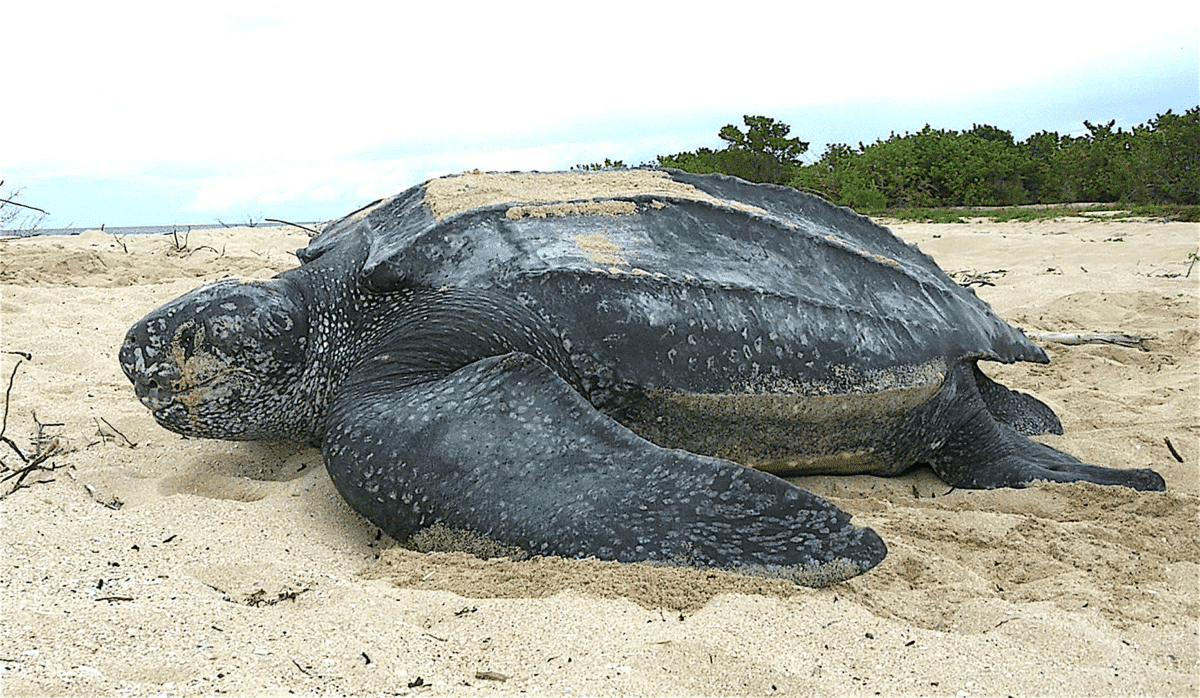
Also called the “lute turtle,” this reptile is the largest of all living turtles and the heaviest non-crocodilian reptile, weighing up to 500kg and reaching up to 1.8m in length. It is easily recognizable for its lack of a bony shell like other turtles; instead, it is covered by flexible leather-like skin known as a carapace.
As the only surviving member of the reptilian family Dermochelyidae, it has the greatest migratory distribution of any reptile on the planet, crossing the Atlantic and Pacific oceans. They migrate from their nesting grounds in the Coral Triangle to the California coast, where jellyfish, their natural prey, are plentiful every summer and fall.
Bycatch by use of indiscriminate fishing methods like gill-nets and poaching of their eggs from their nesting beaches have been consequential to the declining numbers of these endangered animals.
According to the IUCN, their status is listed as vulnerable, but the federal government lists the leatherback turtle as a critically endangered animals species. Sadly earning themselves a mention on the the top 10 most endangered animals in the United States list.
Summary on the Top 10 Most Endangered Animals in the United States
If you enjoyed reading about the top 10 most endangered animals in the United States, check out the top 10 longest living animals and the top 10 animals with the worst memories.
Join our Forum for free today!

- These are The 5 Largest Great White Sharks Ever Recorded - July 19, 2024
- The Surprising Benefits of Big Game Hunting - July 18, 2024
- $100k+ Hunting Experiences The Most Expensive Animals to Pursue - July 17, 2024



